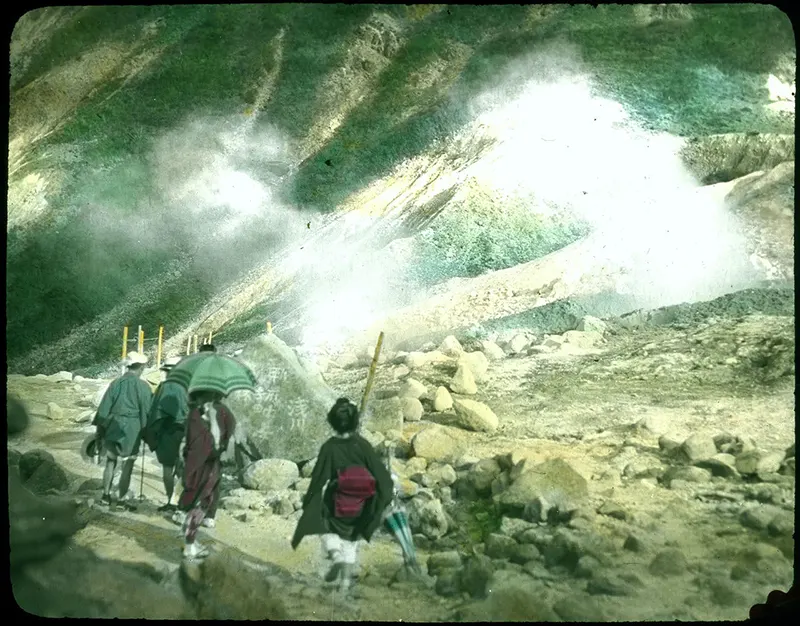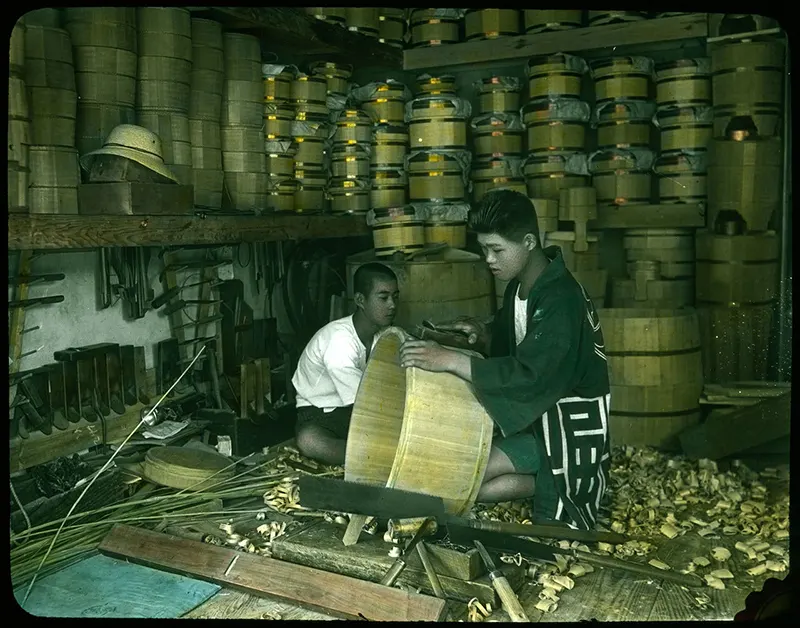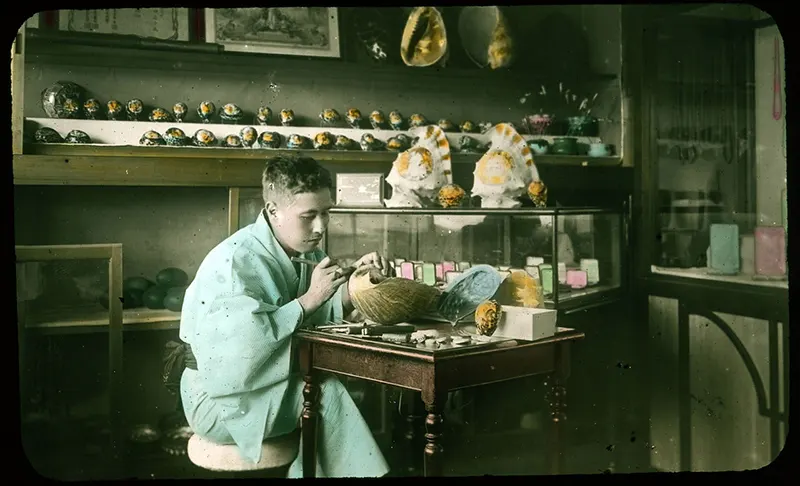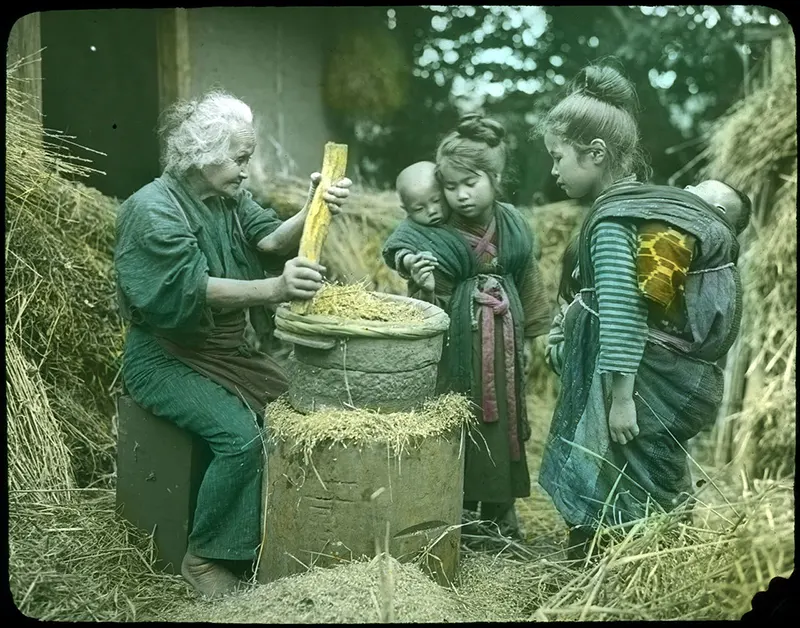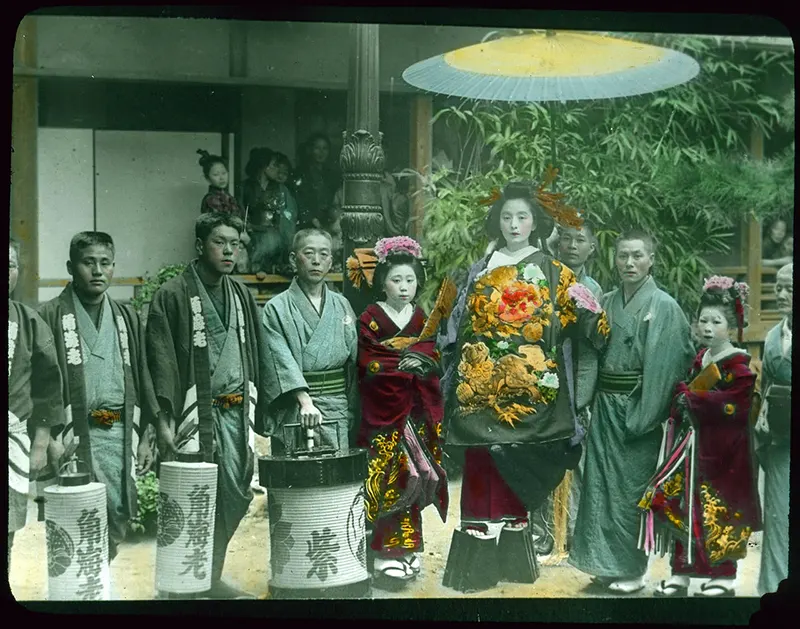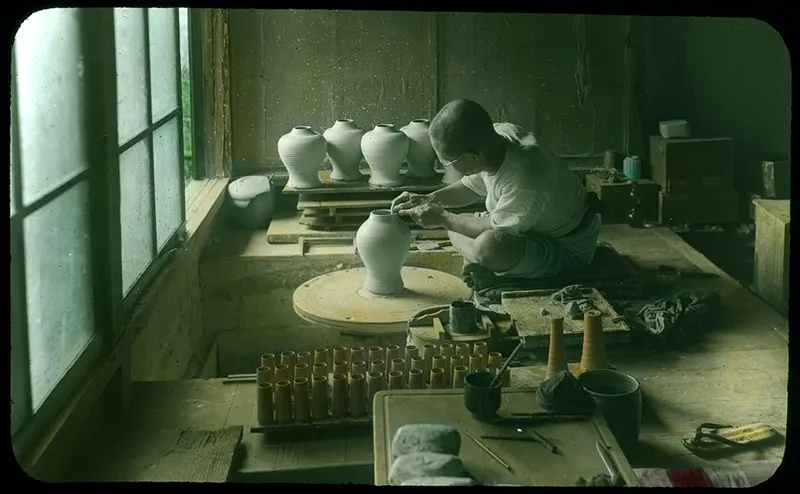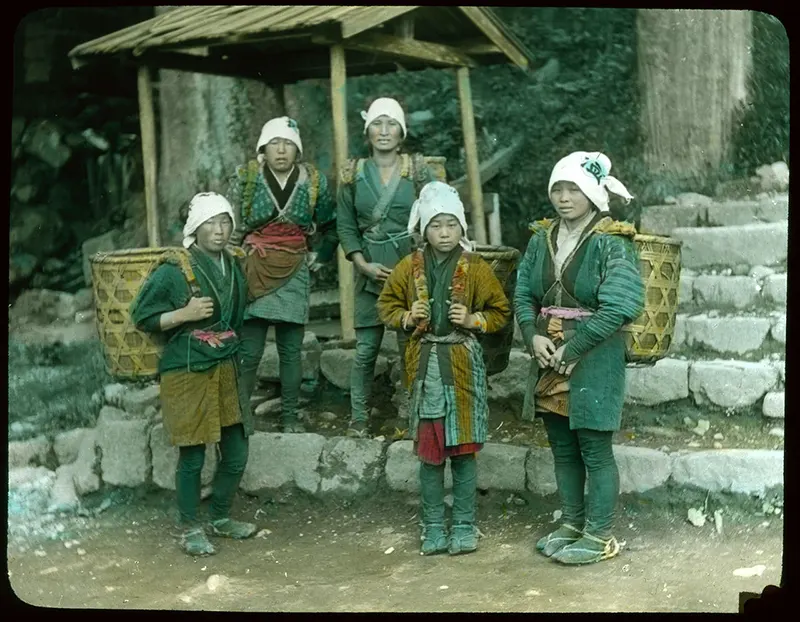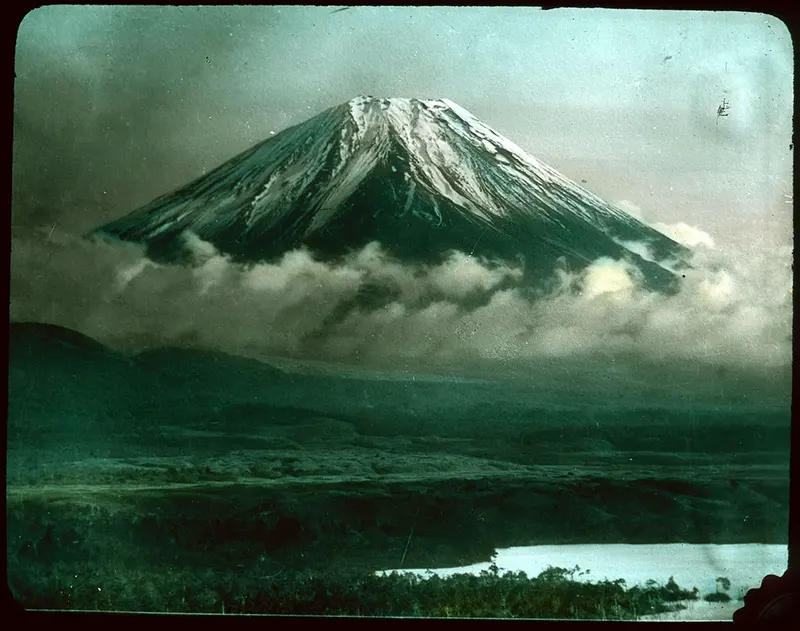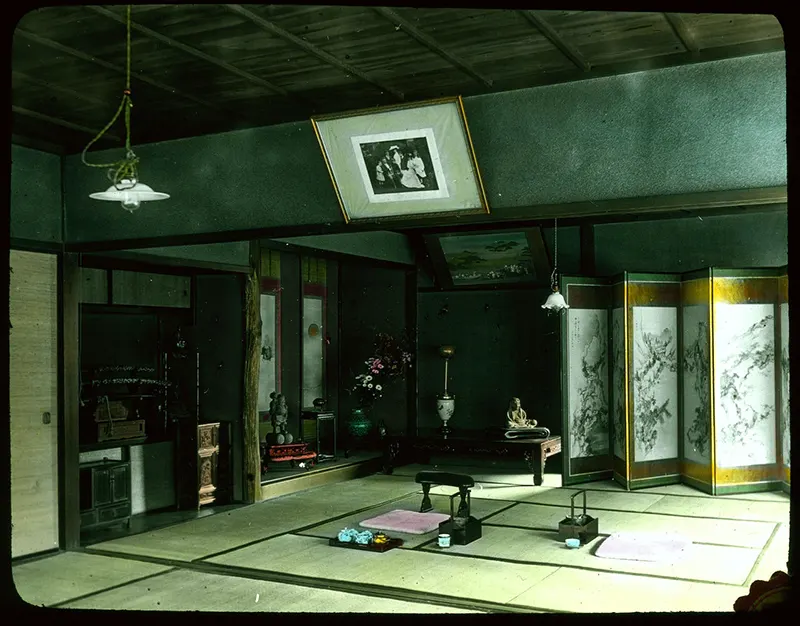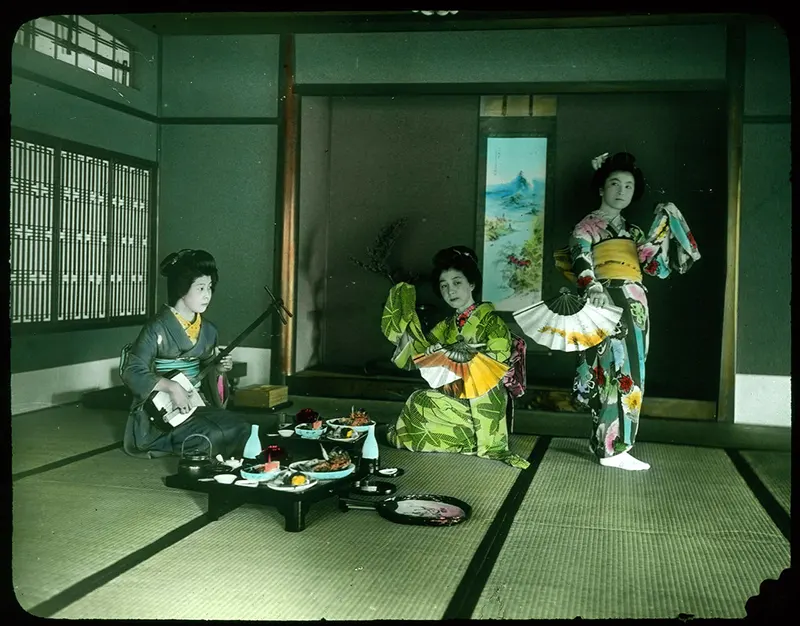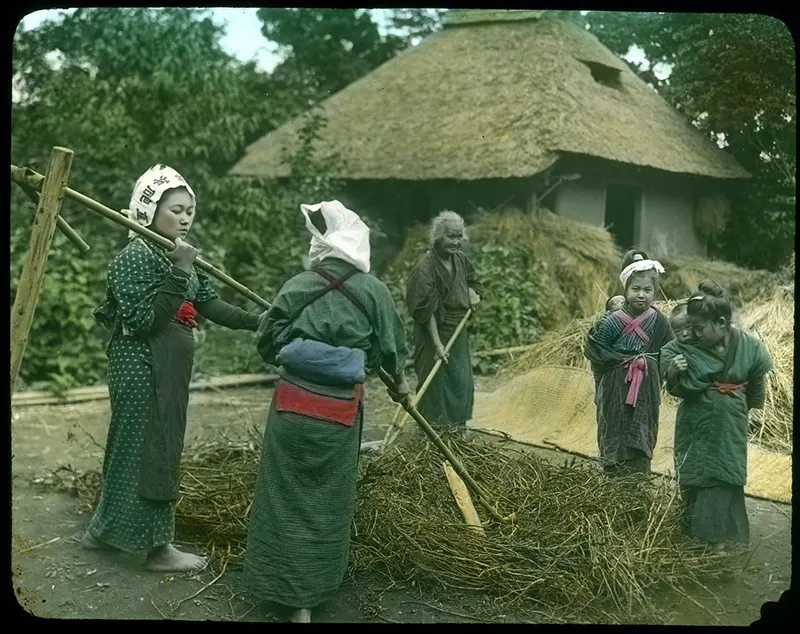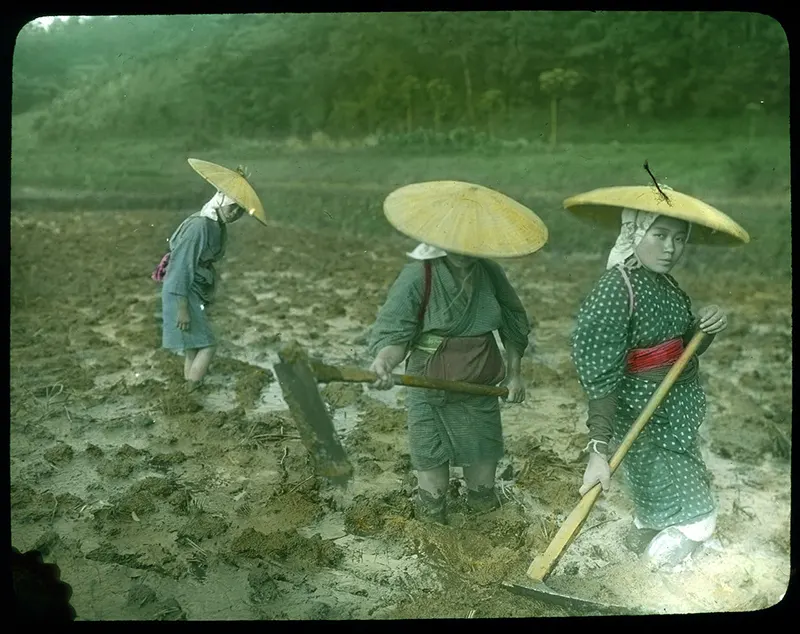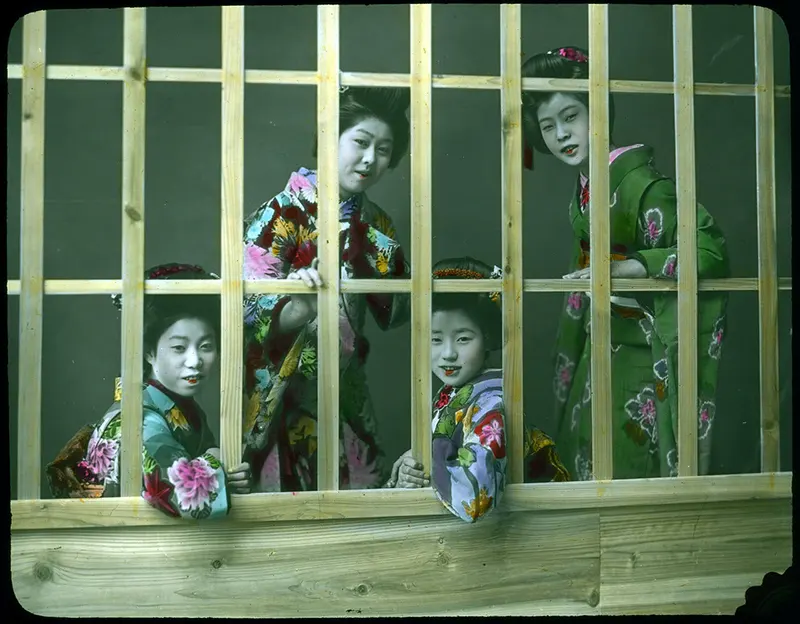The subjects of these photos include civil structures such as temples, bridges, and streets; images of labor such as silk factories, rice cultivation, farming, and portraits of regular people providing an intimate view into Japan’s bygone era. In 1868 the Tokugawa shôgun (“great general”), who ruled Japan in the feudal period, lost his power and the emperor was restored to the supreme position. The emperor took the name Meiji (“enlightened rule”) as his reign name; this event was known as the Meiji Restoration. The Meiji period saw Japan’s transformation from a feudal polity into a modern industrial state, along with its emergence from isolation into the ranks of major world powers. During the early years of the Meiji period, feudal domains were abolished, the samurai class was phased out, a national education program was implemented, and major institutions (military, banking, industrial production, taxation, etc.) were transformed along Western models. In 1889, a new constitution was approved. The constitution invested the emperor with full sovereignty, declaring him “sacred and inviolable”. In spite of its emphasis on the emperor, however, the constitution marked a genuine step toward popular participation. Japan’s victories in the Sino-Japanese War (1894-95) and the Russo-Japanese War (1904-05), along with Japan’s annexation of Taiwan (1895) and Korea (1910) brought international recognition of Japan’s sphere of hegemony in Northeast Asia. But with inroads by Western liberalism and the fear of unrest in the now-industrialized urban centers, Meiji leaders started focusing on upholding Japan’s “traditional” institutions. Emperor Meiji, now associated with success in war and always the symbol of modernization, was therefore raised to new heights of reverence. Textbooks in the compulsory school system course in ethics increasingly emphasized national and military heroes as models. The family systems, formally established by an 1898 supplement to the Civil Code, took the samurai family as the norm for the entire nation. The commonwealth was now described as a “family state” in which political and familiar loyalties reinforced each other. The Home Ministry undertook to place the native cult of Shinto at the service of the government. The Meiji period thus left succeeding generations of Japanese with an ambiguous heritage. By the time of the emperor’s death in 1912, Japan stood as a model of rapid and largely successful modernization. In less than half a century it had developed from an isolated, semifeudal society into a modern state that had secured for itself a prominent place in the world community.
(Photo credit: Flickr: The Commons / University of Victoria Libraries / Wikimedia Commons). Notify me of new posts by email.
Δ Subscribe



